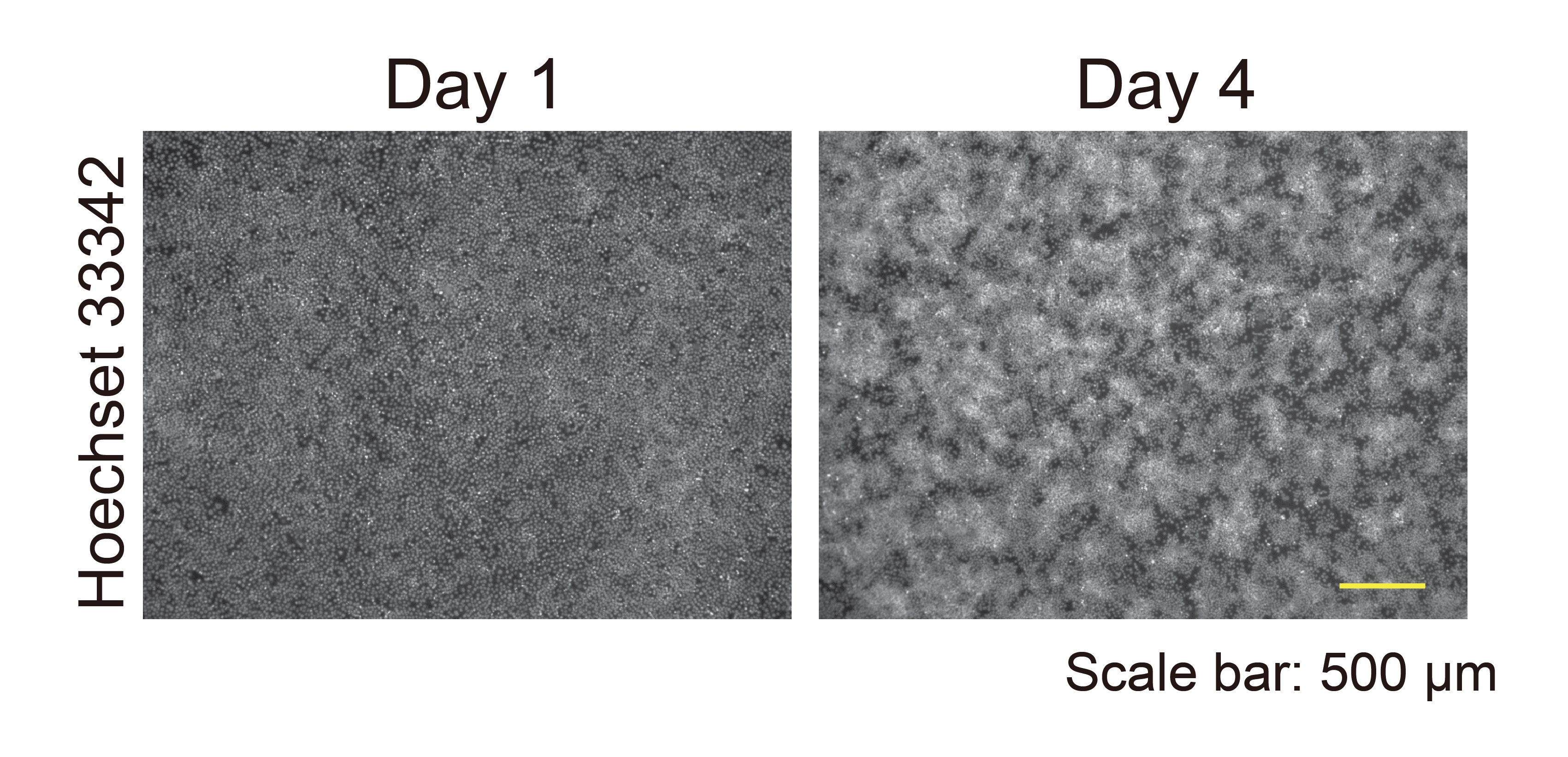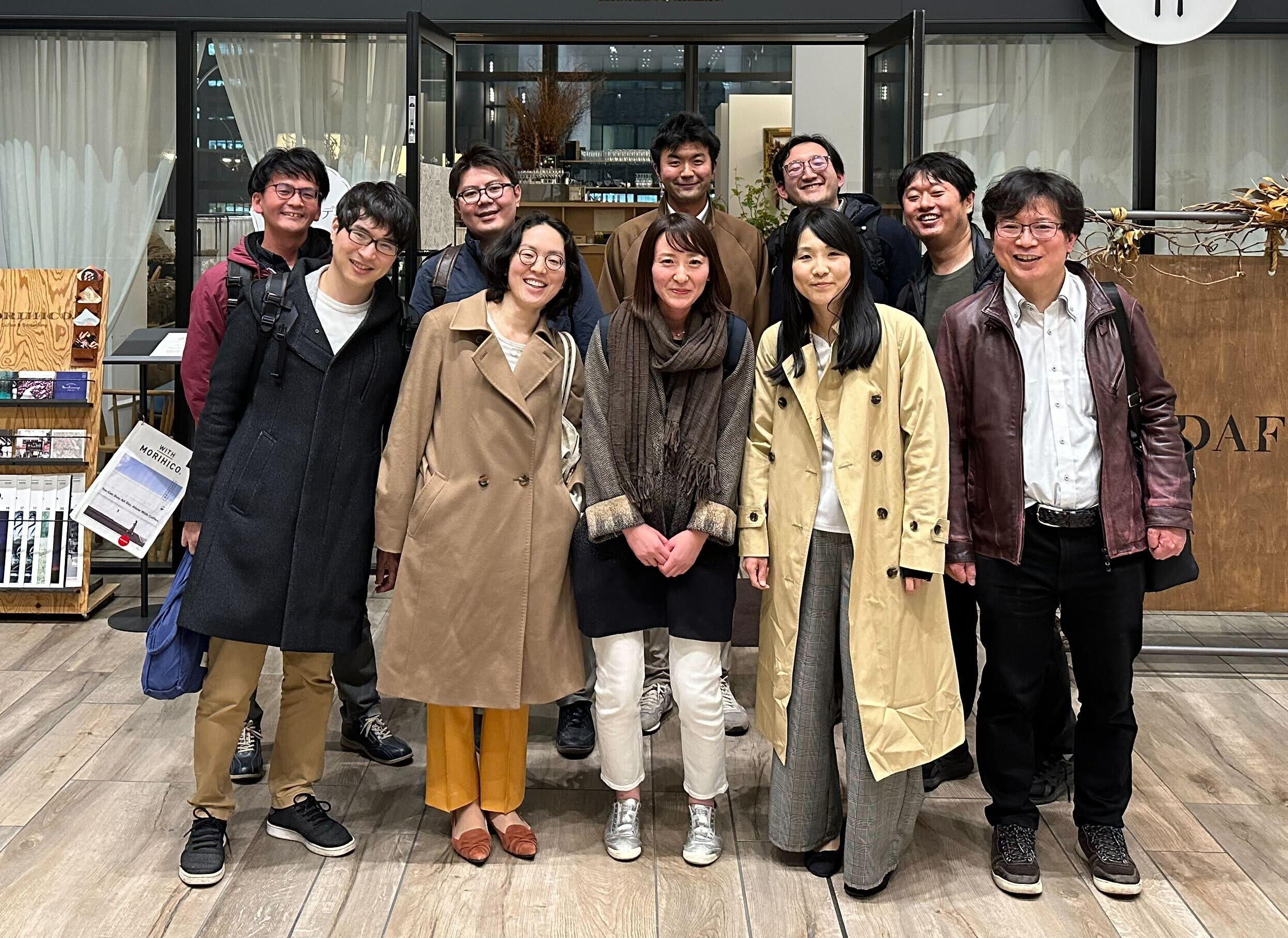Cell-cell adhesion-induced patterning in keratinocytes can be explained by just starvation and strong adhesion, Hokkaido University researchers find.

Keratinocytes display a self-organized pattern after four days in cultures. (Yosuke Mai, et al. Life Science Alliance. July 18, 2024)
Fingerprints are one of the best-recognised examples of pattern formation by epithelial cells. The primary cells in the epithelium are the keratinocytes, and they are known to form patterns at the microscopic and macroscopic levels. While factors affecting this pattern formation have been reported, the exact mechanisms underlying the process are still not fully understood.
A team of researchers, led by Associate Professor Ken Natsuga at the Faculty of Medicine, Hokkaido University, have revealed that cell-cell adhesion governs pattern formation in keratinocytes. Their findings were published in the journal Life Science Alliance.
"In this study, we used an immortalized keratinocyte cell line, called HaCaT, which retains all the properties of normal keratinocytes," Natsuga explained. "In order to ensure that our findings were accurate, we established single-cell cultures from this cell line."
The team observed pattern formation in both the original heterogeneous cell line, as well as in single-cell-derived cultures. During culturing, the keratinocytes moved randomly and spontaneously formed high- and low-density regions, leading to pattern formation.
The pattern formation was markedly influenced by starvation. When the culture medium was renewed, patterns were obscured, but reappeared as the nutrients in the culture medium were consumed by the keratinocytes.

Refreshing the culture medium led to a loss of patterning in keratinocyte cultures. This is particularly noticeable at Day 5, after fresh medium was added on Day 4. (Yosuke Mai, et al. Life Science Alliance. July 18, 2024)
The team then examined the gene expression in the keratinocytes, which revealed that cell adhesion proteins and keratinocyte differentiation proteins were upregulated in high-density regions. "As cell adhesion is necessary for the development of high-cell-density regions, we specifically investigated the expression of adherens junction (AJ) molecules such as E-cadherin and actin," Natsuga elaborated. "We found that these molecules were localized at the intercellular junctions of high-density regions."
The authors then used a mathematical model to confirm that, under spatially uniform density and stress, strong cell adhesion leads to the formation of density patterns. They were also able to demonstrate that the keratinocyte patterns influenced cell proliferation and differentiation, and that serum starvation influences epidermal stratification (a type of differentiation) in skin cells from mice.
"Our study presents a novel and robust model of cell-cell adhesion-induced patterning (CAIP)," concludes Natsuga. "We have deepened our mechanistic insight into cellular organization and its consequences for cell fate decisions and epithelial stratification." The team demonstrated that epithelial cell-cell adhesion is essential and sufficient for patterning. Future work will focus on adding more variables to the model to understand other processes that occur concurrently during development.

The Skin Stem Cell Research Team at the Department of Dermatology, Faculty of Medicine and Graduate School of Medicine, Hokkaido University, including corresponding author Ken Natsuga (deep red jacket, furthest right) and first author Yosuke Mai (black jacket, back row, second from right). (Photo: Ken Natsuga)
Original Article:
Yosuke Mai, et al. Patterning in stratified epithelia depends on cell-cell adhesion. Life Science Alliance. July 18, 2024.
DOI: 10.26508/lsa.202402893
Funding:
This work was funded by the Japan Society for the Promotion of Science (JSPS) KAKENHI (23K15277, JP22K03428, JP23H04936, 23H02928); the Tokyo Biochemical Research Foundation; the Nakatomi Foundation; the Japan Science and Technology Agency (JST) CREST (JPMJCR1926); the Akiyama Life Science Foundation; and the Mochida Memorial Foundation for Medical and Pharmaceutical Research.






